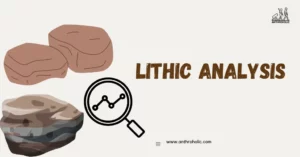AI Answer Evaluation Platform Live Now. Try Free Answer Evaluation Now
Yoga
Yoga is a profound practice that dates back over 5,000 years, originating in ancient India. It is more than just a physical exercise; it integrates mind, body, and soul through a combination of postures, meditation, breath control, and more. This article delves into the anthropological perspectives of yoga, exploring its historical roots, evolution, and the role it plays in various cultures around the globe.

Historical Background
Ancient Beginnings
Yoga’s roots can be traced to the Indus Valley Civilization around 3000 BCE. It was an integral part of the Vedic tradition, where ancient texts like the Rigveda mentioned practices associated with meditation and breath control.
Classical Period
The classical period of yoga was marked by the creation of the Yoga Sutras by Patanjali, around 200 CE. This text laid down the philosophical foundation and systematized the practices into eight limbs or paths:
- Yama: Ethical guidelines
- Niyama: Personal disciplines
- Asana: Physical postures
- Pranayama: Breath control
- Pratyahara: Sense withdrawal
- Dharana: Concentration
- Dhyana: Meditation
- Samadhi: Spiritual absorption
Medieval Period
During this period, Tantra Yoga emerged with a focus on rituals, mantras, and visualizations. Hatha Yoga, a physical practice aimed at awakening spiritual energy, also became prominent [1].
Cultural Integration
Yoga in the West
Yoga started to spread to the Western world in the late 19th and early 20th centuries. Its adaptation has led to the emergence of various styles, such as:
- Ashtanga Yoga
- Vinyasa Yoga
- Bikram Yoga
- Kundalini Yoga
Globalization and Commercialization
Yoga has transformed into a global phenomenon, with an estimated 300 million practitioners worldwide. This globalization has also led to commercialization, with yoga becoming a multi-billion-dollar industry [2].
Therapeutic Applications
Yoga has been found to have various therapeutic effects, including:
- Stress reduction
- Improved mental well-being
- Enhanced flexibility and strength
- Chronic pain management
Several studies have demonstrated the positive impact of yoga on physical and mental health conditions, such as depression, anxiety, and heart disease [3].
Table 1: Comparative Analysis of Yoga Styles
| Style | Focus | Origin |
|---|---|---|
| Hatha Yoga | Alignment | India |
| Ashtanga Yoga | Strength | India |
| Bikram Yoga | Flexibility | USA |
| Kundalini Yoga | Spiritual Awakening | India |
Ethical Considerations
The globalization and commercialization of yoga have raised several ethical questions, including:
- Cultural appropriation: The detachment of yoga from its spiritual and cultural roots in some Western practices.
- Accessibility: The high costs associated with yoga classes and retreats, limiting accessibility for some populations.
Conclusion
Yoga is a multifaceted practice that encompasses physical, mental, and spiritual dimensions. Its historical evolution and cultural integration provide a rich field for anthropological exploration. The modern practice of yoga reveals the complex interplay between tradition and innovation, spirituality and commerce, individual well-being, and social ethics.
References
[1] Feuerstein, G. (2012). The Encyclopedia of Yoga and Tantra. Shambhala Publications.
[2] Singleton, M. (2010). Yoga Body: The Origins of Modern Posture Practice. Oxford University Press.
[3] Khalsa, S. B. S., Cohen, L., McCall, T., & Telles, S. (2016). The Principles and Practice of Yoga in Health Care. Handspring Publishing.




